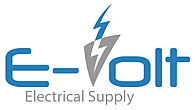Additional Estimating Costs
Equipment Costs
Typically, the installation of FX Luminaire landscape lighting projects is not equipment-intensive. However, some cases require specialty equipment. Add all equipment costs according to their specified hourly rate. Specialized equipment includes:
- Trenching, Cable Pulling, or Boring Equipment: Essential for laying cables underground or through challenging terrain.
- Lifts: Needed for installing tree- or structure-mounted fixtures at elevated heights.
- Heavy-Duty Concrete or Wood Saws: Used for properly cutting wire runs into hardscaping materials.
Subcontractor Costs
If you need an electrician to run additional line-voltage circuits or a tree-climbing crew to install downlights, include these costs in your pricing worksheet.
Planning for Profit
Once you calculate all material, labor, and equipment costs, add them together to get the total cost for the project. Next, factor in overhead costs, including selling and general administrative expenses. Finally, add your profit margin — the return on your business investment.
A common way to manage profit is with a targeted gross margin. Gross margin is calculated as the selling price minus the costs for materials, labor, and equipment (often called the “cost of goods sold”). Gross margin percentage is calculated as the gross margin divided by the selling price.
For residential landscape lighting installations, plan for a 40–50% gross margin. For projects that require a high level of design and installation skills, typical gross margins range from 50–60%.
| < Determining Material Costs |

